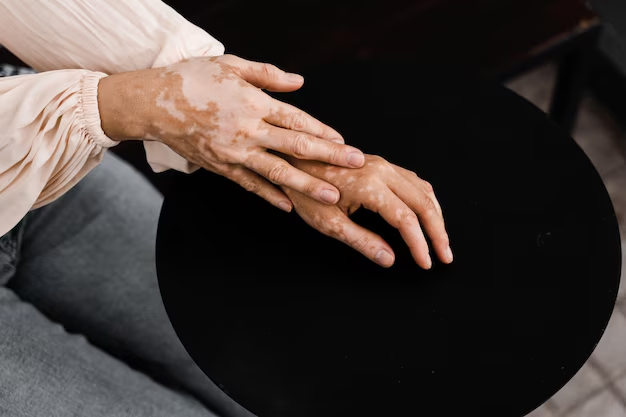Mastering the Pronunciation of Vitiligo: Everything You Need to Know
Understanding medical terms can sometimes feel like learning a new language. Vitiligo, a condition that affects skin pigmentation, is no exception. Pronouncing "vitiligo" correctly is important for effective communication, especially if you're discussing it with healthcare professionals or supporting someone affected by it. In this article, you'll find a thorough exploration of how to pronounce "vitiligo," along with related insights to deepen your knowledge.
Unlocking the Pronunciation: Vitiligo
To pronounce "vitiligo" correctly, start by breaking it down into syllables. The word can be divided into four parts: vi-ti-li-go. Here’s a simple guide to getting each syllable right:
- Vi: Pronounced like "vie," rhyming with "eye."
- Ti: Similar to the "tee" in "teepee."
- Li: Sounds like "lee," as in the name.
- Go: Spoken as "go," just like the action to move.
When combined, it is pronounced as "vie-tee-lee-go." Speaking it out loud, maintaining a steady rhythm across each syllable, can significantly help in mastering the pronunciation.
Why Pronunciation Matters
Clear Communication
Whether you're speaking with a doctor, a friend, or someone dealing with vitiligo, pronouncing the term accurately enhances clarity. Mispronunciation can lead to misunderstandings or require additional explanations, which can be inconvenient or even disrespectful in sensitive discussions.
Building Empathy
Correct pronunciation also demonstrates respect and empathy. Those affected by conditions like vitiligo often face challenges related to skin health and self-esteem. Acknowledging their condition with proper terminology is a small but powerful way to show your support and understanding.
Understanding Vitiligo: A Brief Overview
While pronunciation is essential, understanding vitiligo’s basics can enrich your communication further. Here's a look at what vitiligo is and how it impacts lives.
What Is Vitiligo?
Vitiligo is a long-term skin condition characterized by loss of pigment, resulting in white patches on the skin. This happens when the melanocytes, the cells responsible for skin pigment, are destroyed or stop functioning.
Who Can Be Affected?
Vitiligo can occur in anyone, regardless of skin type or age, though it often appears before the age of 30. The condition is equally prevalent among all races but may be more noticeable depending on the person's skin color.
Impact of Vitiligo
While vitiligo is not life-threatening or physically painful, it can have significant social and psychological effects. Self-esteem and confidence may take a hit, especially in a society where appearance is often linked to identity. Knowing how to pronounce and speak about vitiligo sensitively can be a catalyst for positive conversations about these challenges.
Delving Deeper: Vitiligo and Its Cultural Perceptions
In addition to getting the pronunciation right, understanding cultural views on vitiligo can help you engage in informed discussions.
Misconceptions and Stigmas
In some cultures, there's a stigma associated with skin conditions like vitiligo, often due to misconceptions about its causes. Contrary to some beliefs, vitiligo is not contagious and poses no threat to physical wellbeing. These myths can lead to unnecessary social barriers for those affected.
Awareness and Acceptance
Awareness campaigns and public speeches by high-profile individuals with vitiligo have helped shift perceptions. Superstars and fashion models have spoken openly about their experiences, emphasizing acceptance and self-love. Being informed and using correct terms contributes to this growing acceptance.
Understanding More About Vitiligo's Effects
Beyond cultural perceptions, knowing the physical and psychological effects of vitiligo can help provide better support for individuals experiencing it.
Physical Manifestations
Vitiligo is commonly characterized by white patches on the skin. These patches may appear anywhere on the body, commonly on the face, neck, and hands. Over time, affected areas can expand, but the condition does not directly affect physical health.
Emotional and Psychological Dimensions
Coping with vitiligo can be emotionally challenging. Stress, anxiety, and a decreased quality of life are commonly reported. Supportive friends and family members, armed with correct information and terminology, play a crucial role in encouraging acceptance and resilience.
Encouraging Conversations about Vitiligo
Knowing how to pronounce vitiligo is just the first step — fostering open dialogue is equally important.
Be Approachable
Being open to discussing vitiligo in an understanding and non-judgmental manner can encourage those affected to share their experiences. An open conversation can help dismantle misconceptions and promote positive social interactions.
Educate and Inform
Equipped with accurate knowledge, you can assist in dispelling myths surrounding vitiligo. Sharing what you know with others helps increase awareness and reduce stigma.
Celebrate Diversity
Emphasize the unique beauty of diversity and individuality. Highlighting that vitiligo does not diminish one’s worth is a powerful way to support those with the condition.
Final Insights: Empowerment Through Awareness
The next time you need to mention or discuss vitiligo, you'll do so with a newfound confidence in your pronunciation and understanding of its broader impact. By integrating these insights into conversations, you help pave the way for a more accepting and informed society.
Quick Summary:
- Correct Pronunciation: Vie-tee-lee-go 📢
- What It Is: A skin condition causing pigment loss.
- Impacts: Affects appearance, not physical health; can influence self-esteem.
- Support Tips:
- Use accurate terminology.
- Foster open, empathetic conversations. ❤️
- Be a source of education and awareness.
- Celebrate and respect diversity and individuality.
By embracing these practices, you help those around you feel seen, heard, and understood. 🌟
